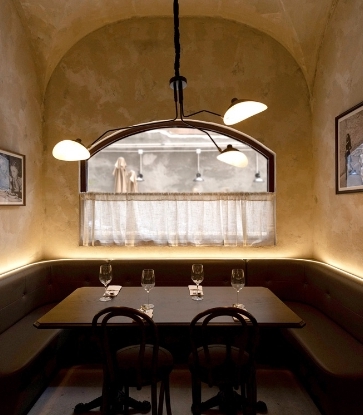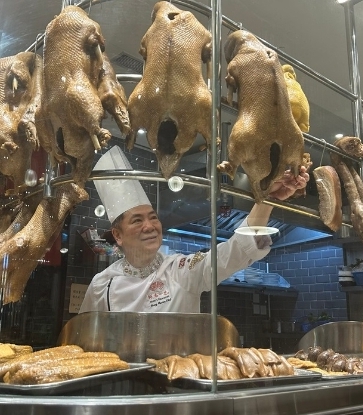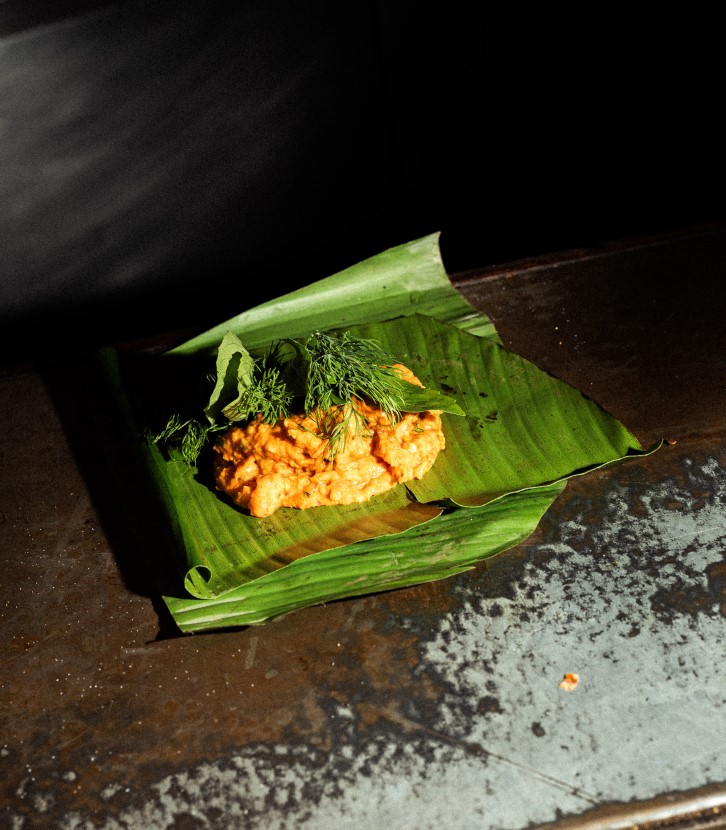Cooking is a constantly evolving art form. Its basic aims always remain the same, but the techniques, approaches and theatrics used to deliver them are forever changing. As with all things, culinary trends come and go, each one writing its own chapter of gastronomic history. Today, it is wood-fired cooking that is dominating the London landscape, appearing on menus left, right and centre across the capital. So why exactly is wood-fired cooking so popular? Who does it best? And what do the MICHELIN Guide Inspectors think of it all? Read on for your comprehensive guide to the culinary zeitgeist.
What is Wood-Fired Cooking?
While we may be referring to this as a modern trend, wood-fired cooking is hardly a new idea. In fact, it’s just about the oldest idea there is. It’s not hard to imagine neanderthals cooking up a storm with just their day’s catch and a few logs. The technique itself is exactly what it sounds like: cooking produce – be it meat, fish or vegetables – over an open flame fuelled not by gas or electricity like most modern cookers, but by simple wood. Along with a back-to-basics appeal, using the technique can impart additional flavour to the produce from the smoke generated by the burning wood.
How a Welshman Shook Up the London Dining Scene
Despite being a technique as old as time, there’s no question that wood-fired cooking has exploded in popularity in recent years. Everywhere you look, restaurants are firing up their grills and adding simply cooked prime produce to their menus. While the exact origins of culinary trends can be hard to trace, one chef who has certainly had a sizeable impact on the medium is Tomos Parry. Even if you’ve not heard his name, you’ll probably know his restaurants, Brat and Mountain, two of the hottest tickets in town and beloved of young, trendy gastronomes.Brat came first, earning a MICHELIN Star in its first year of business, before Mountain repeated the same trick five years later. Both specialise in outstanding produce cooked over the grill with minimal fuss. The whole turbot dish that Brat is named after tells you all you need to know about Parry’s cooking, such is the uncomplicated deliciousness it provides. Together, his pair of restaurants have helped to define high-end London dining over the last few years, with Brat also playing a key role in making Shoreditch and East London as a whole the fast-growing gastronomic hub it is today.

To trace the origins of this success, we must travel further afield: to the Basque country, where Parry garnered influences for his cuisine, and to Wales, where he was raised. The inspiration behind the wood-fired approach was, he tells us: “Growing up in rural Wales, with access to the seas and mountains, where I [could] cook simply over fires outside with beautiful produce. I wanted to recreate this in a city restaurant.”
Recreate it he did, to great effect. Parry is a chef who has mastered this particular art form and he says the secret is in the sourcing. “There isn’t too much to hide behind when it’s just the produce, fire, onto the plate,” he explains. “With fire cooking, every day is different, every piece of wood or charcoal burns differently, therefore a versatile and dynamic mind and approach are key – this comes from experience and being prepared.”

The immediacy of cooking in this way makes it a thrilling challenge for the chef and adds an element of excitement for guests too – but Parry believes there are other factors behind the popularity of the cuisine. “l think in an age of digital development and over-processed diets, people have recently started getting back to a more soulful, healthy but simple way of cooking” he suggests. “There’s a simplicity and sensibility to cooking over fire, where the produce really is key and the chef or cook is not interfering too much and allowing instinct as well as technique to guide their creativity and cooking.”
Which Wood When?
At Humo, another of London’s MICHELIN-Starred restaurants, the wood-fired cooking concept is taken to fascinating extremes. The kitchen doesn’t use any gas or electricity in the preparation of the food; it is a pure, caveman kitchen where fire is always seen as the best method. What’s more, the type of wood used to fuel this fire, and exactly what state of burning it is in, are considered as integral aspects of the cooking process.
“Every type of tree has a unique expression of flavour,” explains Humo’s [now former] Executive Chef, Miller Prada. “We have specialised ourselves into knowing how to extract the right notes of flavour [from] every tree and marry them to an ingredient using different techniques.” Each dish is the result of three considerations, he tells us: “type of wood + technique + stage of fire”. The techniques include “flambadou, cold smoking, hot smoking, flaming, aburi, under ashes, over embers [and] raw wood”, while the menu is divided into the different stages of fire: ‘Ignite’, ‘Flame’, ‘Smoke’ and ‘Embers’.
Crucially, though, all three elements are inherently tied to each other, one choice influencing the other until you have the perfect combination for the dish. “We analyse each type of wood according to density and use it based on the stage of fire that makes more sense and also thinking of the flavour notes that it would release,” Prada says. “For example, juniper branches [are] low density, impossible to reach the stages of fire of flame, embers, ashes and cinders. Smoke is the best stage for using them and at low temperature; the smoke they release is actually gentle and with 'sweet' notes – in our opinion the perfect match for a fatty fish like trout.”

If this all sounds rather technical, it’s because it is. For all its outward simplicity, wood-fired cooking is a real skill and one that’s being studied in greater detail than ever before. And yet, despite the scientist-like precision, Prada still finds plenty of room for romance in his work. “The flickering of the flames as wood catches fire has always been mesmerising,” he says. “I used to build big bonfires in my great aunt’s farm and just sit down and watch the fire. I believe in one way or another, we are all enchanted by fire: the explosions of energy, the crackling, the colours, the movement of the flames and the shadows of the smoke. Maybe it's the security and peace this brings to us or maybe it's the unpredictability and power it has. We do not control it; we only learn how to work with its power and personality.”
What Do the Inspectors Think?
As an experienced bunch, who between them have eaten thousands upon thousands of meals, the MICHELIN Guide Inspectors have seen a fair few trends come and go. So, what’s their take on the wood-fired genre? “Niklas Ekstedt and his restaurant in Stockholm played a big role in revitalising wood-fired cooking,” says one. “His precision and culinary expertise changed the perception of it towards something that could be used in the very best restaurants, which is what we’re seeing in London today.”
The benefits that have resulted from chefs embracing their more primeval side are numerous, according to the Inspectors. “From a flavour point of view, there’s the obvious advantage that the charring offers another dimension to the palette,” one explains. “But there’s also the benefit that chefs using this method are often doing it because they want to ‘leave the produce alone’, meaning that the natural flavours of the ingredients are allowed to shine. The lack of additional, sometimes superfluous, seasoning also results in some of these dishes being healthier than their alternatives.”
Beyond the result on the plate, another Inspector found that having a wood-fired grill in the kitchen changed the feel of the restaurant as a whole: “Having a flame-powered grill often goes hand-in-hand with an open kitchen, because diners being able to see the fire licking into the air creates a brilliant spectacle. This is a primeval cooking method and people like feeling close to nature, so the sight of fire and smell of smoke plays into this, giving the diner a sense that they are receiving something pure and unadulterated. Plus, there’s the simple fact that watching a chef use a wood-fired grill is far more exciting than seeing them use an electric one.”

A final detail that all of our Inspectors agreed on was that, with wood-fired cooking, every dish is gloriously unique. “A lot of cooking is formulaic,” one explains. “While there is something reassuring about achieving the same result every time, there’s also an air of mystery and something thrilling about the fact no two dishes are ever the same. The exact heat of the flames, the type of wood, the angle of the fire – all of these things play a part, meaning the experience is more distinctive, and therefore special, for the diner.”
Where Can I Try Wood-Fired Cooking?
There’s an abundance of restaurants across London specialising in wood-fired cooking these days, from the aforementioned MICHELIN Stars Brat, Mountain and Humo to trendy spots like Caia and Lita. What’s notable among today’s dining scene is that the style is not solely the preserve of specialist restaurants, but incorporated into the menus of a range of eateries. At Decimo it’s mixed with Spanish and Mexican flavours, at Kiln it’s used as part of the Thai cuisine. The ‘godfather of wood-fired cooking’ Niklas Ekstedt even has a branch in the capital.
To help you decide where to get your fiery fix, we’ve compiled a list of the best wood-fired cooking restaurants in London. The trend is not confined to the capital either, with restaurants around the UK, Ireland and indeed the world exploring the joys of wood-fired cooking. LIGИUM in County Galway and Embers in Brighton are two prime examples.
If you take one thing away from this guide, we hope it’s a desire to go out and try wood-fired cooking for yourself. Far from a fleeting fad, this is a culinary trend that’s here to stay, thanks to the utterly delicious results it continues to yield. Wherever you are and whatever your tastes, it’s time to embrace it and light up those grills.
Hero Image: The kitchen at Humo. © Carla Barber










